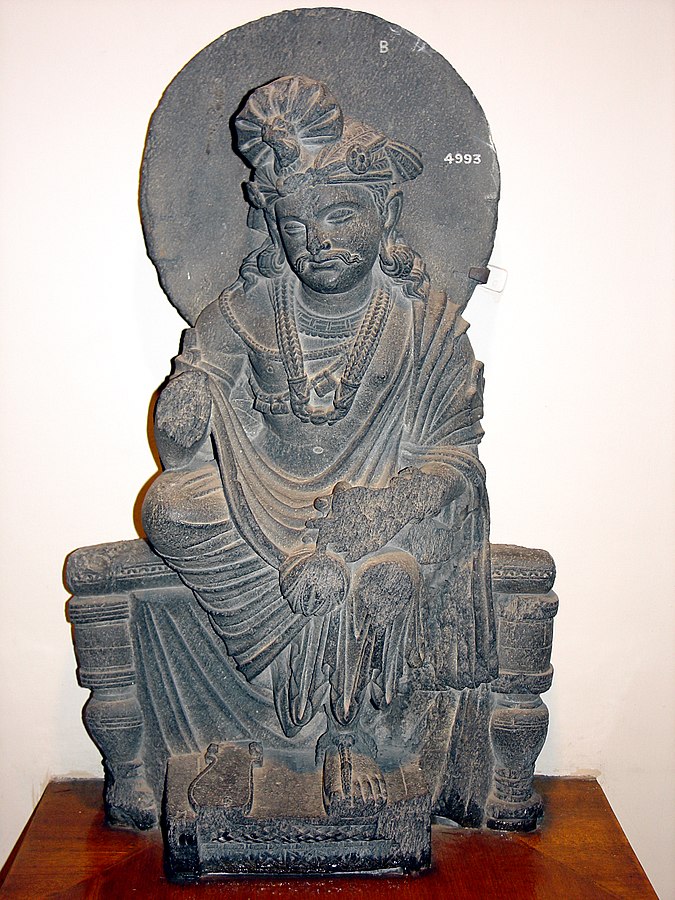
Seated Avalokiteshvara
Gandharan, from Loriyan Tangai
Kushan period, 1st - 3d century AD
Indian Museum, Calcutta
The bodhisattva is recognized by the lotus that he holds in his (damaged) left hand. He wears jewelry (indicating that he has not yet completely left the world), sandals, and a mustache, the latter two being features of west Asian, rather than purely Indic, style. He is disposed rather informally in the posture (or more correctly, one of the range of postures) known as "Royal Ease," which Huntington, p. 139, relates to royal imagery from Kushan.
The Kushanas, who ruled an extensive kingdom from Afghanistan to Bangladesh in the 1st-3d centuries AD, were originally nomads - the Yuezhi (Yueh-chih) - who had been pushed out of their homelands during the expansion of the Former Han dynasty (c. 135 BC).


